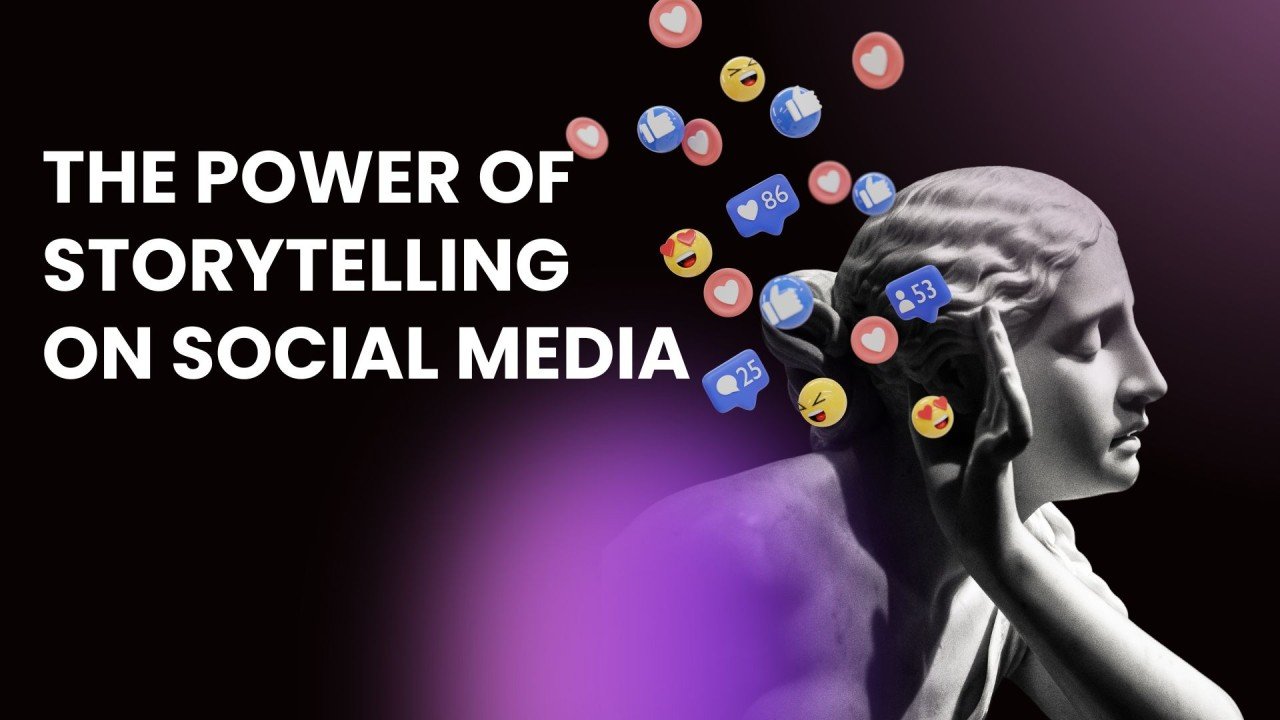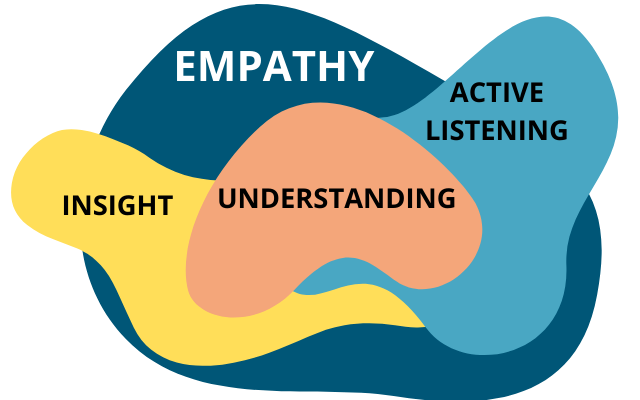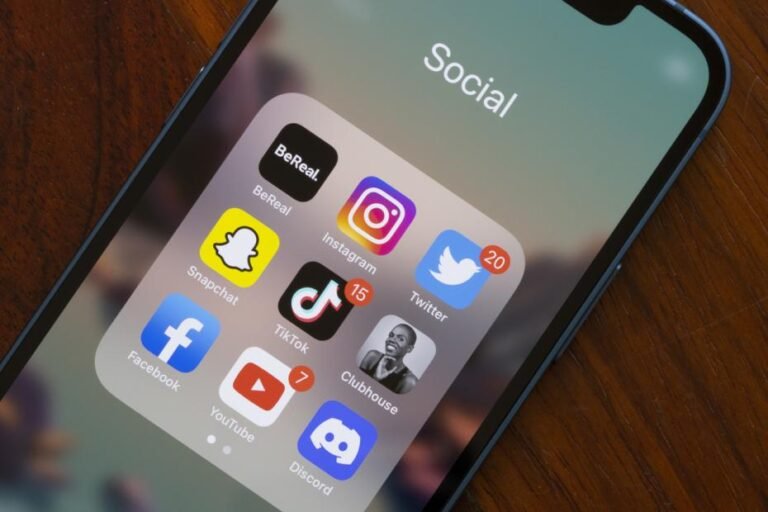The Art of Storytelling on Social Media
Social media has revolutionized how stories are told, shared, and consumed. It’s no longer just about entertainment; storytelling is now a core strategy for brands, influencers, and creators to connect with their audience.
This book explores the intricate art of storytelling on social media, diving deep into strategies, psychology, and best practices to help you captivate your audience and foster engagement.
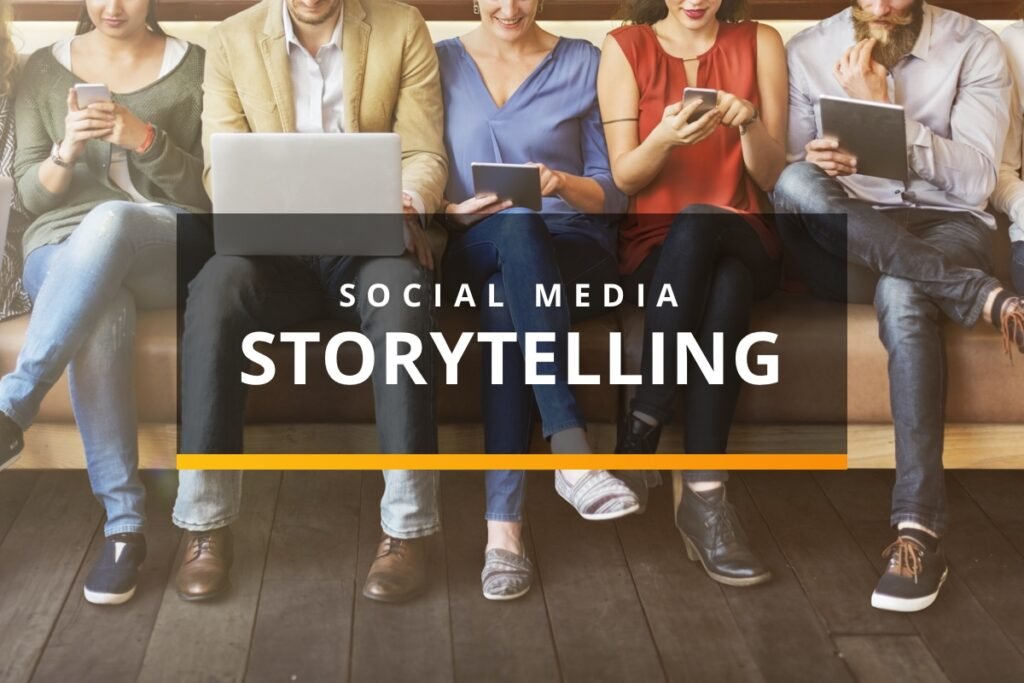
What Is Social Media Storytelling?
Storytelling on social media refers to the art of crafting and sharing narratives that engage audiences across digital platforms like Instagram, Facebook, Twitter, TikTok, and LinkedIn. Unlike traditional storytelling, it leverages the visual and interactive nature of these platforms to convey powerful messages in digestible formats.
Key Characteristics:
- Interactive: Stories on social media are dynamic, inviting audience participation through polls, comments, and shares.
- Visual: Strong use of multimedia such as images, videos, and infographics to enhance engagement.
- Concise: Messages must be impactful in short spaces due to character limits and fleeting attention spans.

Social media storytelling is not confined to one medium or format. From personal anecdotes in a tweet to product demonstrations on TikTok, its versatility enables creators and brands to adapt their narrative style to their audience.
Why Storytelling Matters in the Digital Age
Stories have always been a cornerstone of human communication. They’re how we share knowledge, emotions, and experiences. On social media, storytelling plays an even more critical role as it cuts through the noise of advertisements and information overload.
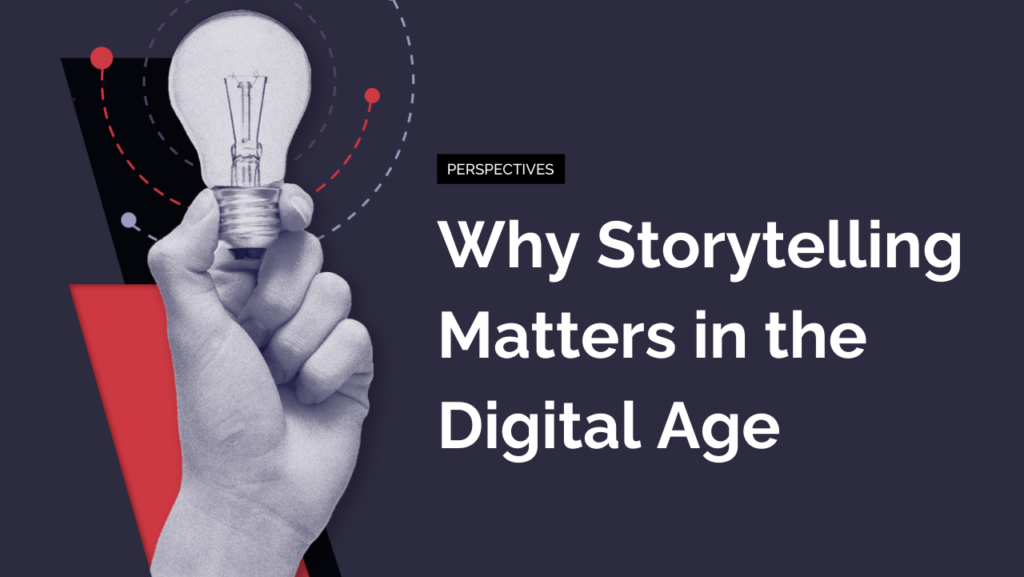
The Shift from Traditional Media to Digital Platforms
The rise of digital platforms has democratized storytelling. No longer confined to television, radio, or print, anyone can now craft a narrative and share it with the world instantly.
For example:
- Old Media: Long-form narratives in print or TV, often requiring significant production resources.
- New Media: Instagram Reels, Twitter threads, and TikTok videos allow even small businesses to tell stories that reach millions.
The Rise of Short-Form Content
With shrinking attention spans, platforms like TikTok, YouTube Shorts, and Instagram Stories have emerged as leaders in storytelling.
- Impact: These platforms encourage concise, engaging narratives that deliver a punch within seconds.
- Example: Chipotle’s viral TikTok campaigns use humor and relatable situations to tell stories about their products in under 15 seconds.
Key Benefits of Storytelling on Social Media
Building Trust and Loyalty: Authentic storytelling fosters trust. For instance, brands that share behind-the-scenes content, employee stories, or customer testimonials humanize their image, making them relatable to their audience.
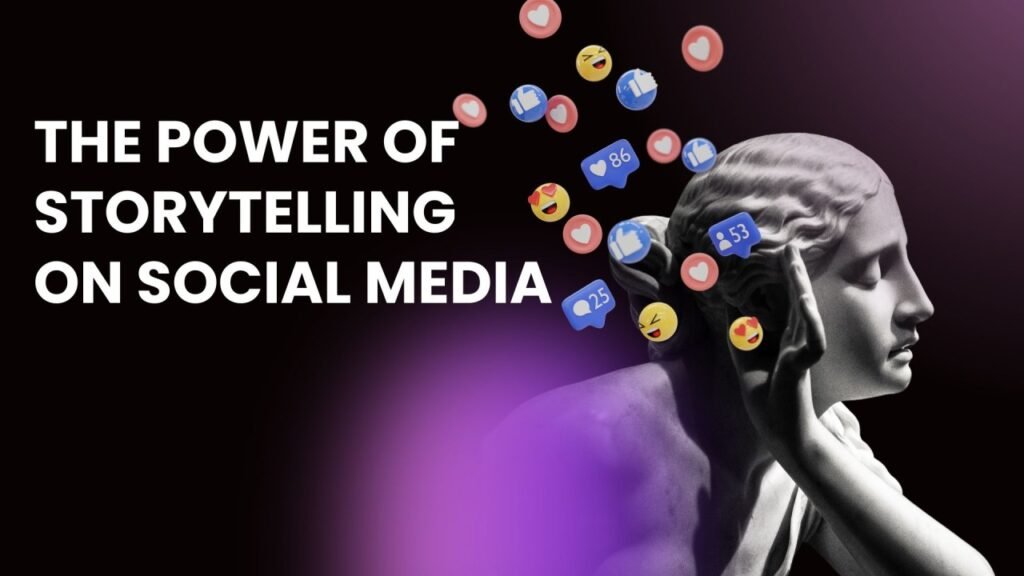
Case Study: Dove’s “Real Beauty” campaign shared authentic stories about self-esteem, resonating with millions globally.
Increasing Engagement and Reach: Stories encourage interactions. Content that evokes emotions—be it laughter, awe, or inspiration—is more likely to be liked, shared, and commented on.
Example: The ALS Ice Bucket Challenge blended a powerful narrative with a call to action, resulting in viral success.
The Foundations of Great Storytelling
The Core Elements of a Powerful Story
Every successful story contains universal elements that draw in audiences and keep them engaged.

Characters: Creating Relatable Protagonists
People connect with people. Even in brand stories, characters play a pivotal role in making narratives relatable.
Example: Nike’s campaigns often center around athletes overcoming challenges, inspiring audiences to push their limits.
Conflict: Driving Interest and Emotion
Conflict is the engine of storytelling. It creates tension and compels the audience to keep watching, reading, or listening to find out what happens next.
Example: A startup’s story about overcoming financial struggles to launch a groundbreaking product can resonate with entrepreneurs.
Resolution: Providing Closure
Audiences crave closure. Stories should end with a resolution that ties back to the overarching message.
Example: Pixar’s “Purl” short film ends with the protagonist finding a balance between individuality and conformity, leaving viewers satisfied yet thoughtful.
Understanding the Psychology of Engagement
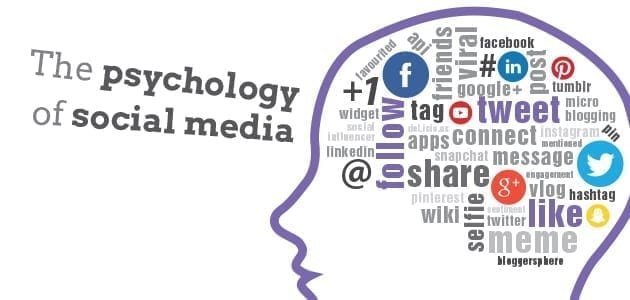
How Stories Trigger Emotional Responses
When people connect emotionally with a story, they are more likely to remember it and act on it.
Neuroscience Insight: Emotional narratives activate the brain’s limbic system, fostering memory retention.
The Role of Empathy in Audience Connection
Empathy allows your audience to see themselves in your story. When brands show they understand their customers’ struggles and aspirations, they create loyalty.
Example: Airbnb’s stories about travelers finding “home away from home” during their stays evoke strong feelings of connection.
Storytelling vs. Selling: Striking the Right Balance
While the ultimate goal for brands is often to drive sales, overtly promotional content can alienate audiences.
Tip: Focus on delivering value, entertainment, or inspiration before introducing a call to action.
Example: Red Bull’s extreme sports stories rarely push product sales directly but create a lifestyle association that drives brand loyalty.
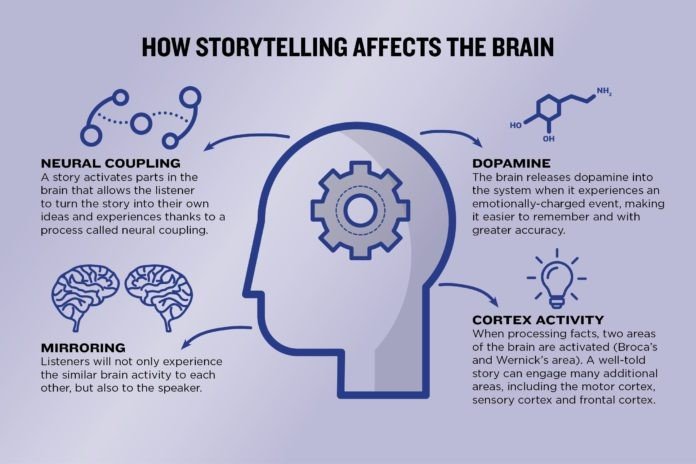
Knowing Your Audience
Understanding your audience is the foundation of effective storytelling. The best narratives resonate because they reflect the needs, desires, and experiences of the audience.
Defining Your Target Demographics
Knowing who your audience is allows you to tailor your stories for maximum impact.

Tools for Audience Research
Leverage analytics tools to gain insights into your audience’s preferences:
- Google Analytics: Provides demographic and behavioral data.
- Facebook Audience Insights: Offers detailed insights into followers’ interests.
- Hootsuite Analytics: Tracks engagement metrics across platforms.

Understanding Cultural and Social Nuances
Storytelling that fails to account for cultural and social contexts risks alienating its audience. For example:
- Good Practice: Coca-Cola’s localized holiday campaigns adapt their messaging to different cultural celebrations.
- Avoid: Pepsi’s Kendall Jenner ad misused social movements, leading to backlash.
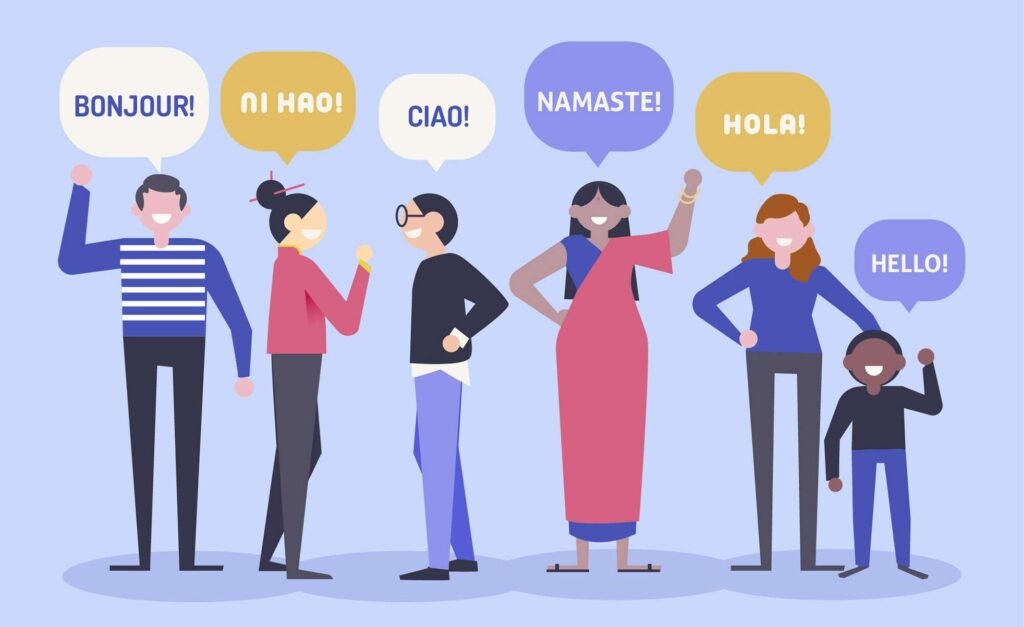
Crafting Stories That Resonate
A story that resonates is one that aligns with the values, beliefs, and aspirations of your audience.
Aligning Stories with Audience Values
Audiences are more likely to engage with brands that share their values.

Example: Patagonia’s commitment to sustainability resonates with environmentally conscious consumers. Their storytelling focuses on conservation and ethical practices.
Addressing Pain Points Through Narratives
Frame your product or service as the hero of the story that solves your audience’s problems.
Example: Slack’s advertising highlights how teams overcome disorganization through their platform, making it indispensable for productivity.
Evolving with Audience Feedback
Audience feedback is a goldmine for storytelling inspiration. Monitor comments, reviews, and direct messages to refine your narratives.

Tip: Use polls on Instagram Stories or Twitter to ask your audience what type of content they want to see.
Example: Netflix uses audience data to craft marketing campaigns, like their personalized email recommendations based on user viewing habits.
Visual Storytelling in the Social Media Era
Visual storytelling is the backbone of social media narratives. From images to videos, visuals capture attention and evoke emotion faster than words.

How Images Evoke Emotions Instantly
Images bypass logical reasoning and tap directly into the emotional brain.
Tip: Use high-quality images that complement your story. For example, a smiling customer holding your product tells a story of satisfaction and trust.
The Impact of Video Content on Engagement
Videos combine motion, sound, and visuals, making them the most engaging form of content.

Statistics: Videos generate 1200% more shares than text and images combined.
Example: BuzzFeed Tasty’s overhead recipe videos captivate audiences with quick, visually satisfying content.
Designing Stories for Specific Platforms
Each social media platform has unique characteristics that influence how stories should be told.
Instagram: Crafting Aesthetic and Engaging Stories
Instagram is a visual-first platform. Use these features to tell compelling stories:
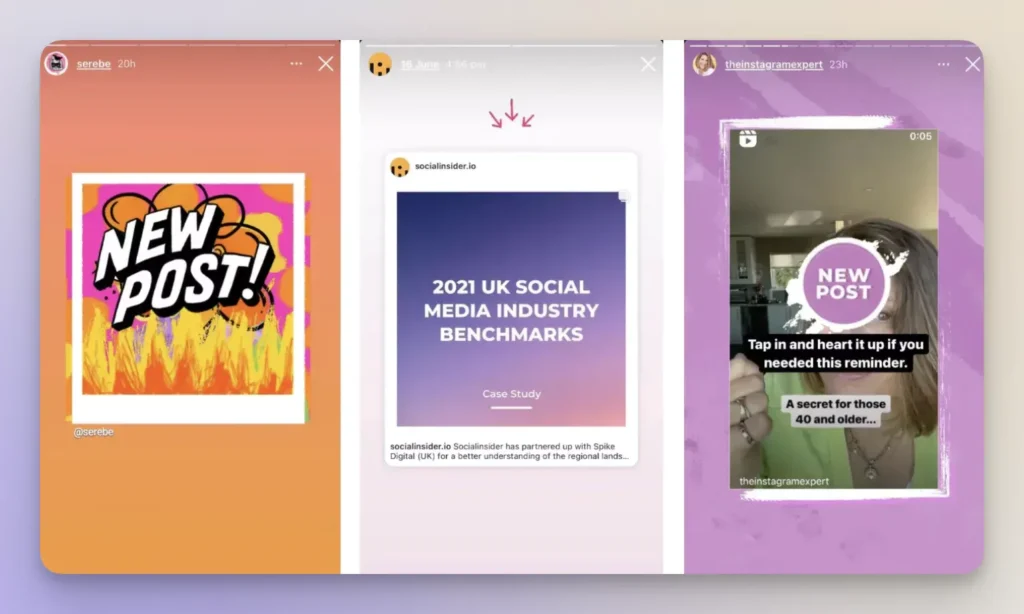
- Stories: Share behind-the-scenes content or time-limited announcements.
- Reels: Create short, engaging videos that entertain and inform.
- Carousels: Use a multi-slide format to build anticipation or educate.
TikTok: Leveraging Trends and Short-Form Videos
TikTok thrives on creative storytelling, often through trends, music, or challenges.
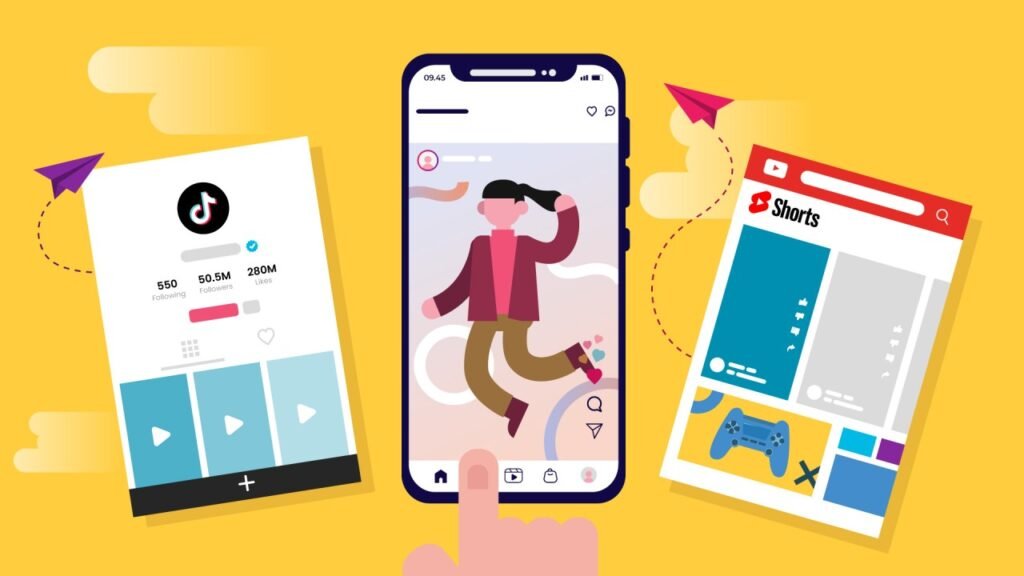
Tip: Participate in trending challenges that align with your brand’s voice.
Example: Duolingo’s humorous TikTok videos personify their owl mascot, making language learning fun and relatable.
Tools and Tips for Effective Visual Storytelling
Here are some tools to elevate your visual storytelling:
- Canva: For easy graphic design.
- Adobe Premiere Pro: For professional video editing.
- Lumen5: For turning blog posts into short videos.

Platform-Specific Storytelling Strategies
Each platform has distinct storytelling opportunities. Mastering them ensures your message lands effectively.
Facebook: Fostering Community Through Stories
Facebook is ideal for longer narratives and community building.

Tip: Use Facebook Groups to create niche communities where your audience can engage directly with your brand.
Example: Peloton uses Facebook Groups to foster community among fitness enthusiasts.
Instagram: Telling Stories Through Photos and Reels
Instagram’s visual focus allows for creative storytelling.
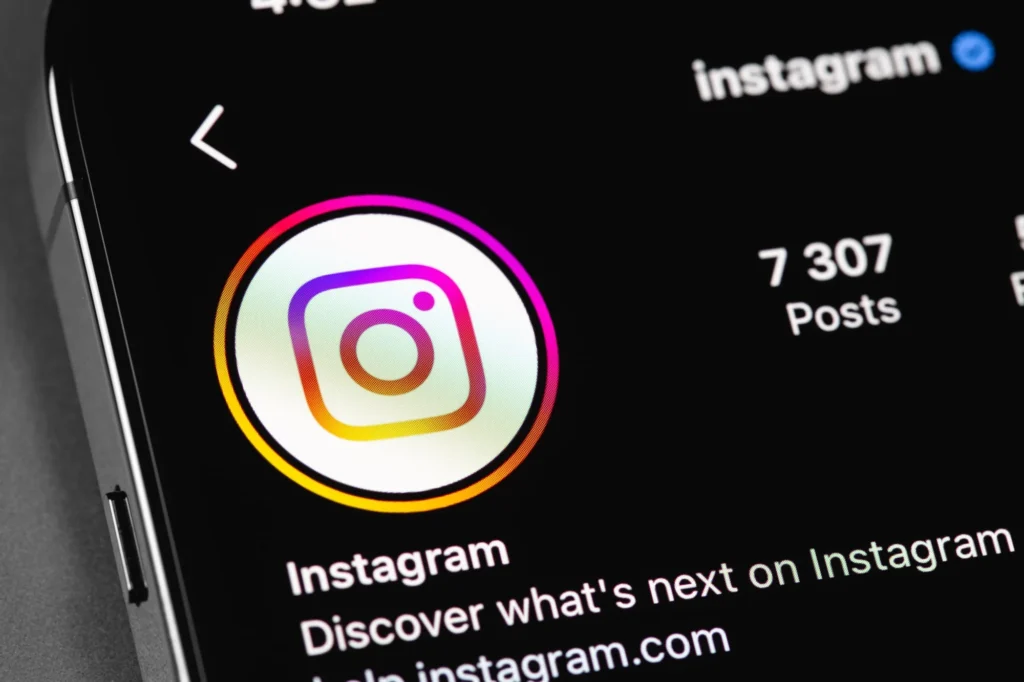
Maximizing the Instagram Stories Feature
- Use polls, quizzes, and countdown stickers to make Stories interactive.
Leveraging Hashtags and Captions to Enhance Stories
- Use hashtags to increase discoverability and craft captions that complement the visuals.
Twitter: Concise and Impactful Storytelling
Twitter thrives on brevity.
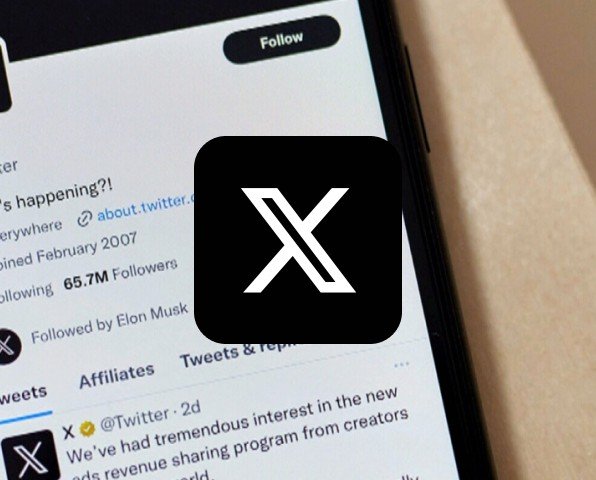
Tip: Use Twitter threads to break down complex stories into smaller, digestible pieces.
Example: NASA’s Twitter threads simplify scientific achievements into engaging, layman-friendly narratives.
LinkedIn: Professional Storytelling for Brands
LinkedIn is perfect for sharing thought leadership, case studies, and professional milestones.

Example: A consultancy firm sharing a client success story can position itself as a leader in its field.
TikTok: Engaging the Younger Audience Through Creativity
TikTok demands creativity and authenticity.
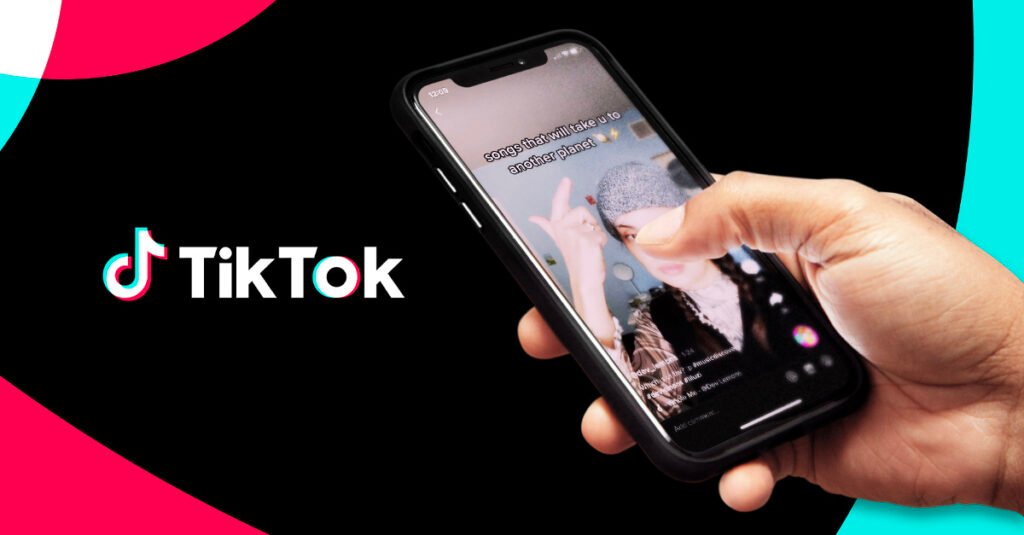
Tip: Collaborate with influencers to reach broader audiences.
Example: Ocean Spray’s viral TikTok campaign featuring Nathan Apodaca drinking cranberry juice skyrocketed sales and brand visibility.
The Role of User-Generated Content
User-generated content (UGC) has become a cornerstone of social media storytelling. It empowers audiences to share their stories while amplifying your brand’s narrative through authentic voices.
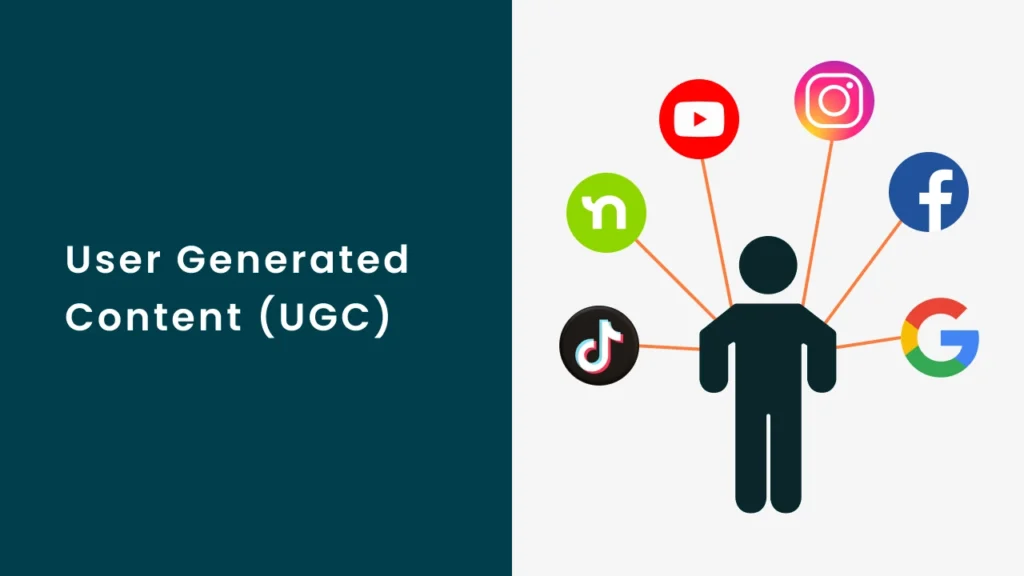
Encouraging Audience Participation
Encouraging your audience to contribute their own stories fosters community and trust.
Methods to Inspire Participation:
- Run contests or challenges (e.g., Starbucks’ Red Cup Contest).
- Create a branded hashtag (e.g., #ShotOniPhone by Apple).
- Share prompts or themes that inspire creativity.
Case Study: Coca-Cola’s “Share a Coke” campaign encouraged consumers to find bottles with their names and share pictures online. This personal touch sparked massive engagement.
Sharing Customer Stories and Testimonials
Showcasing real-life customer stories creates credibility and relatability.
Formats for Sharing:
- Highlight testimonials in Instagram Stories.
- Create long-form LinkedIn posts spotlighting customer success.
- Develop short videos for TikTok or Reels, featuring user experiences.
Example: Airbnb often features guests’ stories, highlighting unique stays and emotional connections to their travel experiences.
Collaborating with Influencers for Broader Reach
Influencers are trusted voices within their niches. Partnering with them adds authenticity and reach to your storytelling efforts.
- Tips for Collaboration:
- Choose influencers whose values align with your brand.
- Give them creative freedom to tell their story with your product or service.
Example: Daniel Wellington’s influencer campaign encouraged creators to share their personalized stories with the hashtag #DWPickoftheDay, boosting brand visibility.
The Emotional Power of Storytelling
Stories are powerful because they evoke emotion. When audiences feel something, they are more likely to engage, share, and remember your content.
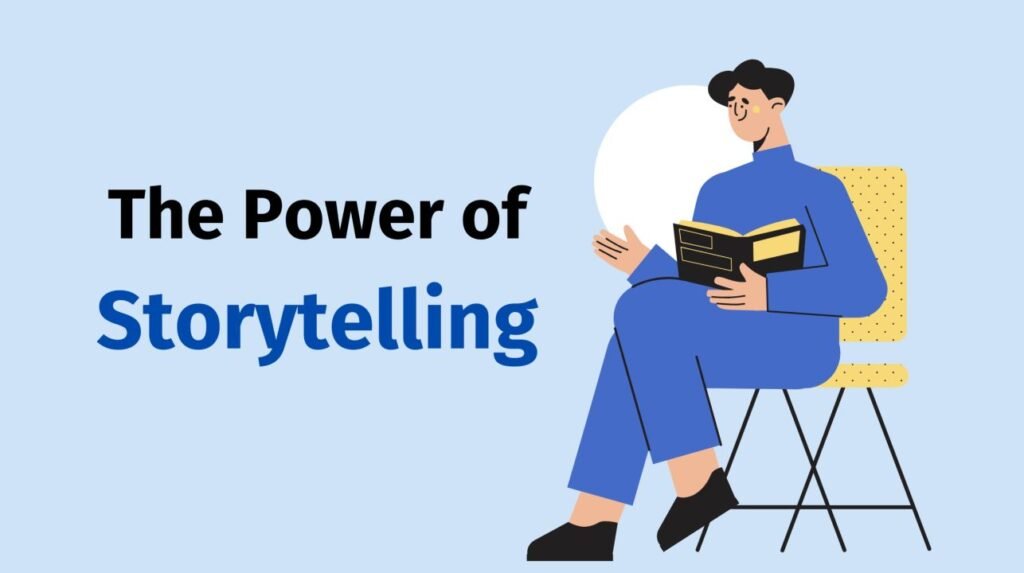
Evoking Emotion to Strengthen Engagement
Using Humor to Build Relatability: Humor can break down barriers and make your brand feel more approachable.
Example: Wendy’s Twitter account uses witty humor and sarcasm to entertain its audience, making it one of the most followed corporate accounts.
Leveraging Inspirational Narratives: Inspirational stories tap into audiences’ aspirations, driving connection and loyalty.
Example: Nike’s “You Can’t Stop Us” campaign featured stories of perseverance during the pandemic, resonating deeply with audiences.
Case Studies: Emotional Campaigns That Worked
Explore examples of emotional storytelling that left lasting impressions:
- Always’ #LikeAGirl Campaign: Challenged stereotypes and redefined what it means to do something “like a girl.”
- Dove’s Real Beauty Sketches: Focused on self-esteem and identity, touching millions.
- Google’s Reunion Campaign: Highlighted the human connections made possible through their search tools.
Data-Driven Storytelling
Data and analytics are essential for refining your storytelling strategy. They help you understand what works, what doesn’t, and how to adapt.
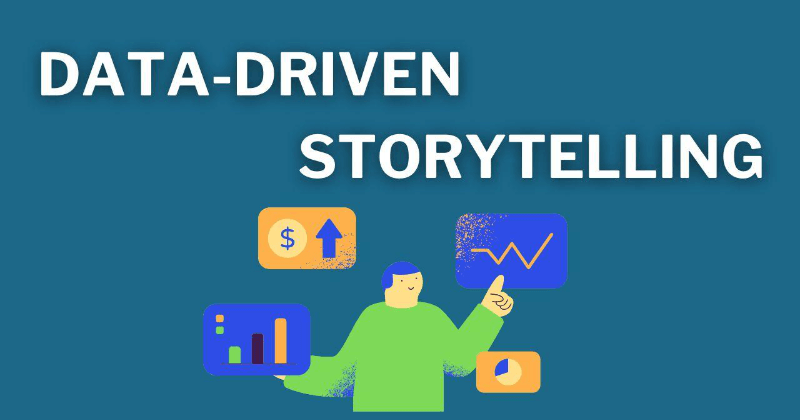
Measuring the Success of Your Stories
Key Metrics to Track Engagement: Track these KPIs to measure success:
- Reach: Number of unique viewers.
- Engagement: Likes, shares, comments, and clicks.
- Conversions: Actions taken, like purchases or sign-ups.
Tools for Analyzing Social Media Performance
- Sprout Social: Tracks engagement and audience insights.
- BuzzSumo: Analyzes which stories are resonating most with audiences.
- Tableau: Visualizes storytelling performance data.
Refining Your Stories with Analytics
Use data insights to improve your storytelling approach.
Tip: A/B test different types of stories to identify what resonates most with your audience.
Example: A clothing brand can test whether lifestyle-focused stories or product-centric narratives generate more engagement.
Ethical Considerations in Storytelling
As storytelling becomes increasingly influential, it’s important to approach it with ethical responsibility.

Maintaining Authenticity and Transparency
Audiences value honesty and can quickly detect when a story is inauthentic.
Tip: Avoid exaggerating claims or misrepresenting facts.
Respecting Privacy and Consent
When sharing customer stories or UGC, always obtain permission.
Example: Apple’s #ShotOniPhone campaign ensures contributors consent to their photos being shared globally.
Avoiding Stereotypes and Cultural Appropriation
Be mindful of inclusivity and representation in your stories.
Tip: Involve diverse voices in your storytelling process to ensure your narratives are culturally sensitive.
Building a Brand Through Storytelling
Storytelling is one of the most powerful tools for establishing and maintaining a strong brand identity.
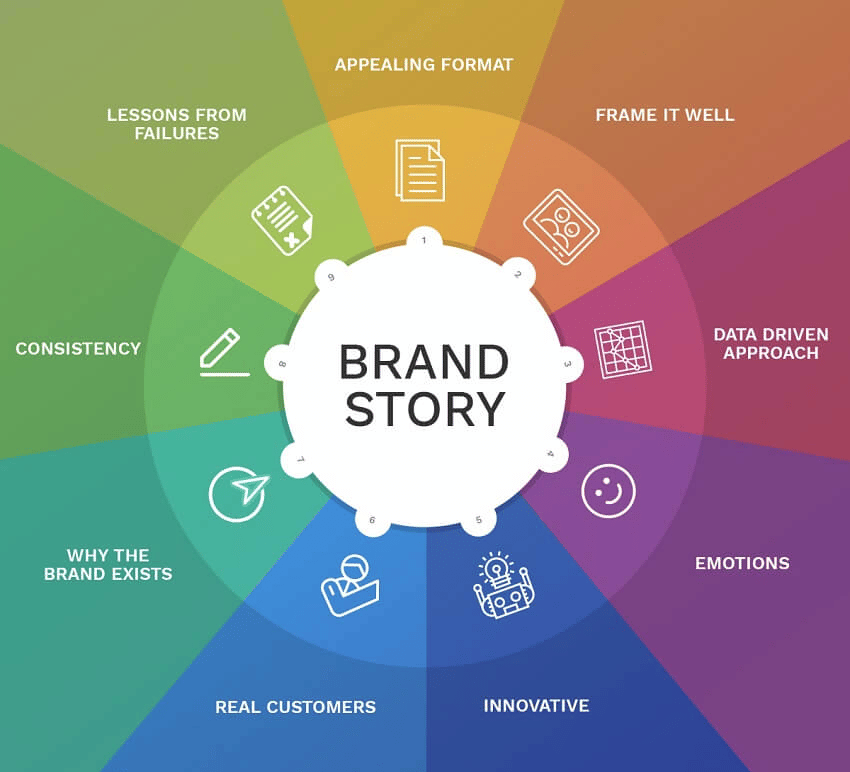
Aligning Stories with Your Brand Identity
Your stories should reflect your brand’s mission, vision, and values.
Example: Ben & Jerry’s consistently ties its stories to social justice, aligning with their activist brand identity.
Creating a Consistent Brand Narrative
A cohesive narrative builds familiarity and trust.
Tip: Develop a brand voice guide to ensure consistency across all platforms.
Differentiating Your Brand Through Unique Stories
Stand out by sharing unique, memorable stories that competitors can’t replicate.
Example: Airbnb’s focus on hosts and travelers creates a sense of connection that competitors struggle to match.
Overcoming Common Challenges
Storytelling isn’t always easy. Here’s how to tackle common obstacles.
Handling Negative Feedback
Negative comments or backlash can derail a story.
Tip: Address criticism promptly and transparently to rebuild trust.
Keeping Your Stories Fresh and Relevant
To maintain engagement, adapt your narratives to reflect current events and trends.
Example: Oreo’s “You Can Still Dunk in the Dark” tweet during the Super Bowl blackout became an instant hit by capitalizing on a live moment.
Adapting Stories for Global Audiences
Tailor your stories to resonate with diverse cultural contexts.
Tip: Use local teams to craft region-specific narratives.
Emerging Trends in Social Media Storytelling
Social media storytelling is constantly evolving. To stay ahead, brands and creators must keep an eye on the latest trends and technologies shaping the future of digital narratives.
The Role of AR and VR in Storytelling
Augmented Reality (AR) and Virtual Reality (VR) are transforming storytelling by making it more immersive and interactive.

AR Applications:
- Snapchat and Instagram filters use AR to enhance storytelling by allowing users to interact with the narrative visually.
- IKEA’s AR app lets users place furniture in their homes virtually, creating an interactive product story.
- VR Applications:
- Tourism brands like National Geographic use VR experiences to transport users to exotic destinations.
- Brands can develop VR ads that let customers “experience” their products in a unique way.
AI-Powered Story Creation
Artificial intelligence is enabling personalized and scalable storytelling.

How AI Helps:
- Tools like ChatGPT or Jasper AI can generate content tailored to specific audiences.
- Predictive analytics help determine which stories will perform best based on past data.
Example: Netflix uses AI to recommend shows and craft marketing messages that appeal to individual viewers.
Predicting Audience Behavior with Big Data
Big data allows brands to anticipate trends and craft stories that align with audience preferences.
Use Cases:
- Spotify’s “Wrapped” campaign uses listener data to create personalized year-in-review stories, increasing engagement.
- Amazon uses customer data to recommend products and design promotional campaigns.
Case Studies of Successful Storytelling Campaigns
Learning from successful campaigns can provide invaluable insights into what makes social media storytelling effective.
Viral Campaigns That Captured Hearts
Explore campaigns that resonated deeply with audiences and why they worked:
ALS Ice Bucket Challenge:
- Combined user-generated content, emotional storytelling, and a call to action to raise millions for ALS research.
- #ShareACoke by Coca-Cola:
- Personalized storytelling through names on bottles encouraged people to share photos and stories, driving massive engagement.
Lessons Learned from Failed Campaigns
Failure offers critical lessons. Here are examples of storytelling missteps:
Pepsi’s Kendall Jenner Ad:
- The ad was criticized for trivializing social movements, highlighting the importance of cultural sensitivity.
- McDonald’s UK “Dead Dad” Campaign:
- A story involving a child grieving his father was deemed inappropriate for promoting fast food, showcasing the risks of emotional manipulation.
Best Practices from Industry Leaders
Learn from the consistent storytelling successes of top brands:
- Nike: Inspires through emotional narratives about perseverance and achievement.
- National Geographic: Combines breathtaking visuals with compelling stories about nature and exploration.
Practical Tips for Aspiring Storytellers
Mastering social media storytelling requires continuous improvement and adaptation. Here are actionable tips to enhance your storytelling skills.

Developing Your Unique Voice
Your storytelling voice is what sets you apart from others.
How to Develop It:
- Reflect on your brand’s values and personality.
- Experiment with different tones until you find what resonates with your audience.
- Example: Wendy’s sarcastic and humorous voice on Twitter makes it stand out in the fast-food industry.
Creating a Content Calendar for Consistency
A content calendar ensures your stories are timely and consistent.
- Steps to Build a Calendar:
- Plan content themes around key dates, events, and trends.
- Schedule posts using tools like Buffer or Hootsuite.
Example: Starbucks plans seasonal campaigns, like their Pumpkin Spice Latte launch, ensuring cohesive storytelling across all platforms.
Using Storytelling Tools to Enhance Your Creativity
Harness digital tools to elevate your storytelling:
- Canva: For creating stunning visuals.
- Premiere Pro: For professional-quality video editing.
- Trello: To organize content creation and scheduling.
Conclusion: The Future of Storytelling on Social Media
The Ever-Evolving Landscape of Social Media: Social media platforms are constantly changing, introducing new features and trends. Staying adaptable is essential for effective storytelling.
Example: Instagram’s transition from photo-centric to video-focused content reflects the growing importance of dynamic storytelling.
Encouraging Continuous Learning and Adaptation: Storytelling is an art that requires ongoing refinement.
Tips for Growth:
- Study successful campaigns regularly.
- Attend webinars or conferences focused on digital marketing and storytelling.
- Experiment with new platforms and formats.
Final Thoughts on the Power of Stories
Stories are timeless. Whether shared in 280 characters, a 15-second video, or a long-form post, they have the power to inspire, connect, and drive action. By mastering the art of storytelling on social media, you can create lasting relationships with your audience, foster brand loyalty, and leave an indelible impact.
Social media storytelling is not just a marketing tool; it’s a bridge to deeper connections with your audience. By applying the strategies, tips, and insights outlined in this book, you’ll be equipped to craft narratives that resonate, inspire, and succeed in the ever-evolving digital landscape.
Disclosure: Our blog contains affiliate links to products. We may receive a commission for purchases made through these links. However, this does not impact our reviews and comparisons. We try our best to keep things fair and balanced, in order to help you make the best choice for you.

